
Painting of the French painter Jacques Louis David “Oath of Horace”. The size of the painting is 330 x 425 cm, canvas, oil. The painting “Horatius Oath” most vividly embodies the principles of revolutionary classicism. It reveals the irreconcilable and tragic contradictions between civic duty and personal feelings of people. The plot of the picture is borrowed from the ancient Roman legend. During the struggle between Rome and Alba Longa, three Romans, brothers from the Horatian clan, had to go to a deadly duel in order to solve the outcome of the quarrels between the hostile cities.
Opponents of Horatians are friends of their childhood. One of them is engaged to his sister Horace. Going to a fatal battle, the brothers take an oath to the father to protect the fatherland. They are unshakable and resolute in their noble impulse, underlined by the unity of broad energetic gestures. The Father blesses them to the feat. David’s heroes are free from controversy and doubt. Their passions are subject to will and reason. They go to battle, believing in the triumph of justice. In the background on the right is a group of weeping women; they only shade and supplement the leitmotif – all personal must be sacrificed to civil debt.
The idea of the work is expressed with utmost clarity and laconism. Three-part division of the architectural background with Tuscan columns emphasizes the semantic separation of the composition. Compressed space, bas-relief construction, calmly measured rhythm contribute to the identification of a severe heroic character. The main means of artistic expressiveness in the creation of images: a clear and concise gesture, a strict emphatically-energetic drawing, a clear cut-off modeling, a color complementing the characteristics, impart a surprising wholeness to the general solution.
“Oath of Horace” – a strange and wonderful picture: strange because of some uncertainty of what it all the same tells us. Its place in the history is enormous – it anticipated the moods raised in society, clearly articulating their essence. David said that he took the story from Corneille, and the form of Poussin. Having visited the presentation of the tragedy of Pierre Corneille “Horace”, telling about the conflict between love and duty, David first chose the episode where Horace, convicted for the murder of Sister Camille, is defended by the father and the Roman people. Friends discouraged David from this plot, which did not reflect, in their opinion, any special mood of the time. David said that he would choose the moment before the battle, when the old Horace takes his son’s oath to win or die – a moment that the artist could only guess,
For the heroic scene of the oath, the proper composition was necessary, and a suitable historical example was found – Brutus, who takes an oath of vengeance over the dishonored body of his sister Lucretia. The author of the composition was the ancestor of Scottish neoclassicism, Gavin Hamilton. Later, there will be another French borrowing of this topic, which fed patriotic sentiments. Reflecting on his picture, David saw the Poussin cloth “The Abduction of Sabine Women”, and he was struck by one of the images – the extreme figure on the left, which will become the basis of his new composition. Three additional figures – one of the brothers with a spear, an old woman and a suffering Camilla – were taken by David from other works. David strengthened the impact of the plot, combining the figures in their harmonious and powerful triple-learning.
The semantic aspects of the picture of “The Horatius Oath” created by David were more complex than in the scene with Brutus, who expelled the vicious ruler of Tarquinius. At least the pending analogy with another, more famous Brutus, who vowed to kill Caesar and create a republic, is also read by David. Thanks to capacious associations and convincing transfer of the mood prevailing in the picture, David, with his great ambition, managed to create a symbol-symbol – the personification of boundless civic courage.
Goratsiev’s oath is a story-a myth about an oath that was never brought about or about which we do not know anything. This image is ideal and, in essence, abstract – the image of determination and, ultimately, the image of the revolution, the only example of how the work of the artistic imagination becomes one with the factors that determined the course of history.
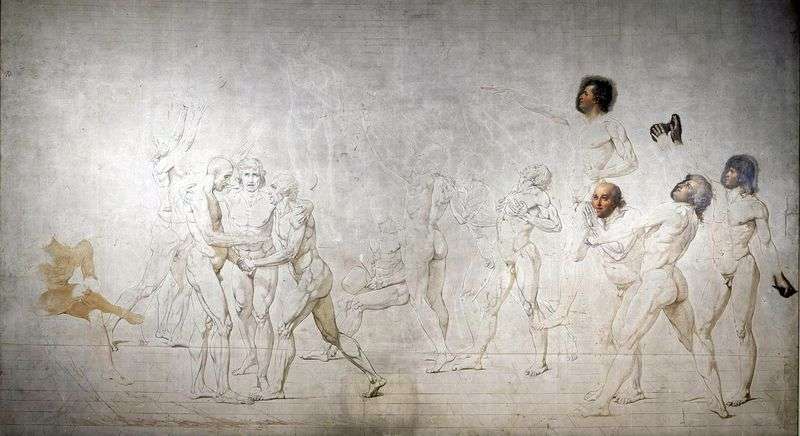 Oath in the ballroom by Jacques Louis David
Oath in the ballroom by Jacques Louis David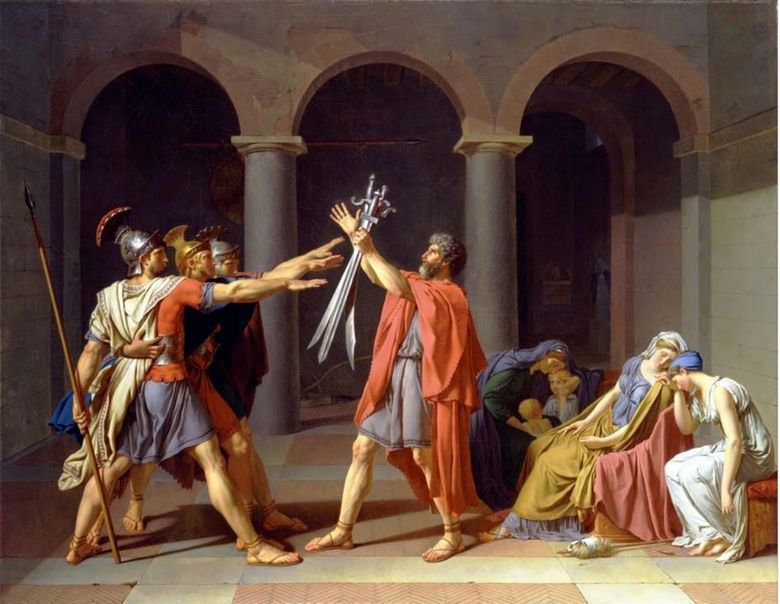 Le serment d’Horace – Jacques-Louis David
Le serment d’Horace – Jacques-Louis David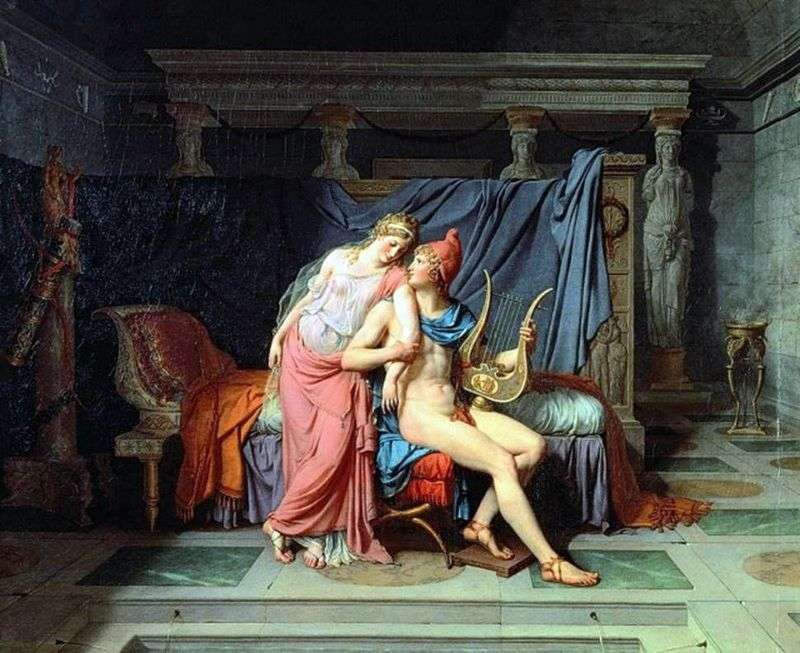 Love of Paris and Helena by Jacques Louis David
Love of Paris and Helena by Jacques Louis David Lictors bring Brutus the bodies of his executed sons by Jacques Louis David
Lictors bring Brutus the bodies of his executed sons by Jacques Louis David The death of Socrates by Jacques Louis David
The death of Socrates by Jacques Louis David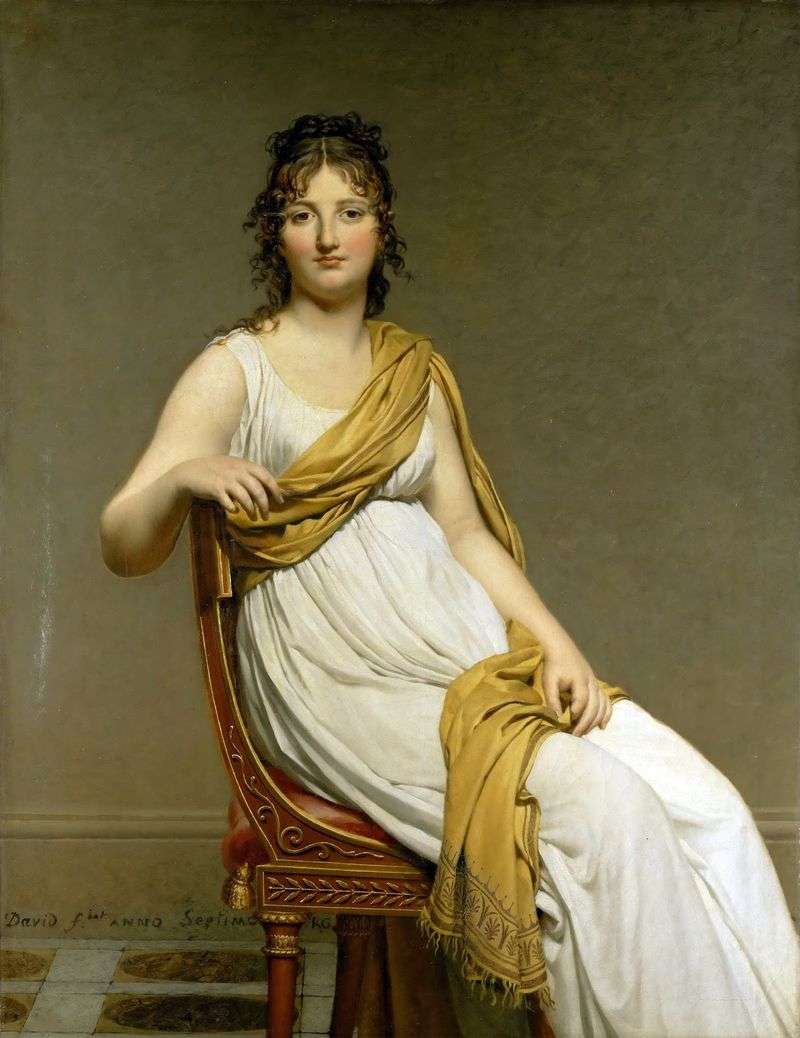 Portrait of Madame Henrietta de Verniniac by Jacques Louis David
Portrait of Madame Henrietta de Verniniac by Jacques Louis David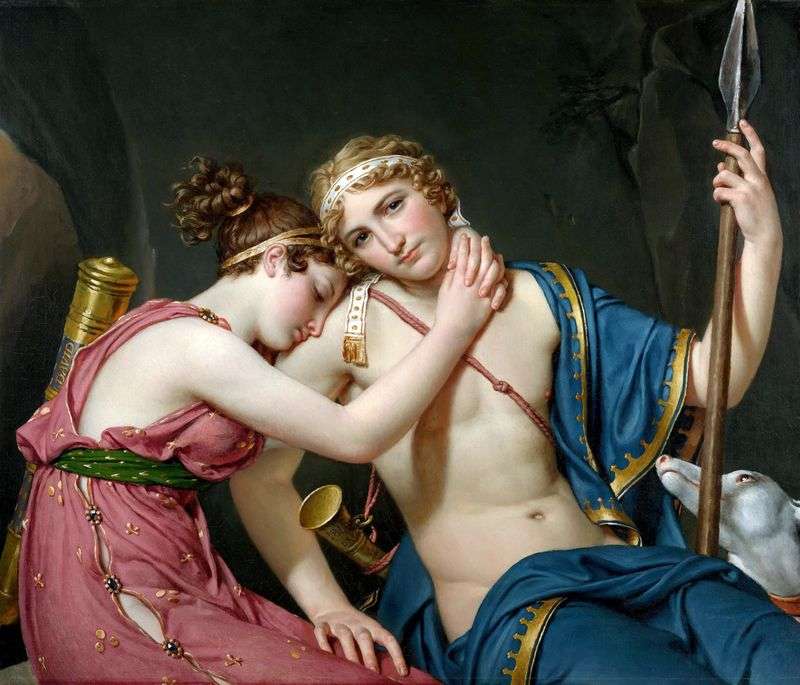 The Travel of Telemachus by Jacques Louis David
The Travel of Telemachus by Jacques Louis David Pierre Serizia by Jacques Louis David
Pierre Serizia by Jacques Louis David